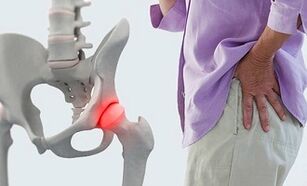
Our body is a complex system in which breaking a "screw" provokes the failure of other "parts". In addition to diseases of the internal organs, chronic diseases of the musculoskeletal system, especially the joints, also cause a lot of trouble. Today I propose to discuss osteoarthritis of the hip joint. What are the recommended symptoms and treatments.
This joint is the largest in the human skeleton. It is used continuously during walking, bending, turning, so the disease brings the patient severe pain and stiffness in movement. Fortunately, with early diagnosis, the disease is well treated with medication. But it is not so easy to suspect that something was wrong, you need to know all the features of the disease and be able to distinguish the first manifestations. And, of course, take care of the ways to prevent it, and our article will help you with that.
Osteoarthritis or osteoarthritis of the hip joint is also called coxarthrosis, all of these terms mean one thing - a complex progressive disease with the destruction of the cartilage that holds the femoral head and the acetabulum. As a result, the joint gradually collapses, turns into bone, grows too large and loses movement.
Coxarthrosis - what is it
Let’s take a closer look at what coxarthrosis is, as this is the term doctors often use for the fact that recently the word “osteoarthritis” was excluded from medical terminology, as it was previously believed to have nothing to do withinflammation, but later scientists proved the opposite. For us, these discrepancies are not important, the main thing is that all these names refer to the same very unpleasant disease.
So coxarthrosis is a degenerative-dystrophic disease that provokes the destruction and deformation of cartilage tissue. It is diagnosed mainly in women over 40 years old and in men - 60 years old.
Why is it an injustice so great that ladies have made a mistake before nature? The issue here is in the particular structure of the female skeleton and the load on the hip joint, especially during childbirth and childbirth. As a result, it is middle-aged women who are more likely to suffer from this disease; in the older age category, the number of patients of different genders is gradually equalizing.
Causes of hip arthrosis
The reasons for the development of osteoarthritis in the hip joint can be numerous.
The most common of these are:
- Inheritance
- , if your parents or one of your relatives had such a disease, then you should be more attentive to your health, since although the disease itself is not related to genetics, a predisposition to metabolic disorders and cessation ofother can cause joint problems;
- heavy loads on the pelvis, especially in athletes who run, jump, lift weights;
- overweight, even a slight increase in weight can be negative for the joints, which causes an added load on them, therefore obese people are more prone to osteoarthritis;
- injuries, fractures, blackened pelvis;
- endocrine disorders such as diabetes can cause bone problems;
- inflammatory, infectious processes in the body, for example, purulent or rheumatoid arthritis;
- presence of problems with the spine or bones (flat feet, scoliosis, osteochondrosis) that change posture and stress in the joints;
- hormonal imbalance;
- weakening of blood circulation to tissues;
- sedentary lifestyle;
- old age, which is associated with a deterioration of tissue nutrition.
Coxarthrosis rate
Doctors distinguish 3 stages or stages of disease development, which will help to distinguish the main symptoms. Importers it is important to know that when diagnosed in stage 1, it is quite possible to completely cure the disease and forget about it for many years, and in the third stage, the only correct decision will be an operation, otherwise the patient will facedisability.
Phase 1
The following symptoms will help determine the presence of osteoarthritis in the first degree hip joint:
- pain during and immediately after heavy load on the joints;
- localization of pain only in the area of bone junction;
- gait does not change;
- pa çalim;
- muscles maintain their strength and shape.
During the computer diagnosis, the doctor may notice bone growth on the surface of the joint, especially along the inner and outer edges of the acetabulum. At this stage, correctly selected medications allow you to fully restore the ability of the joints to work, but not all of us tend to go to the doctor at the first appearance of pain.
Admit it, a little worry often makes you think about stretching, shifting, fatigue. We begin to wipe the sore spot with various creams, oils, try to treat with folk methods, without understanding the cause and wasting precious time. Therefore, if you feel pain in your legs, the first thing you need to do is go to the doctor, setting aside some time for yourself - this is the key to a long, full and happy life!
Phase 2
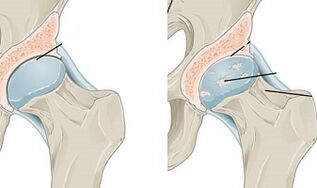
If the problem was not diagnosed and treated immediately, then grade 2 osteoarthritis gradually forms, which is characterized by the following symptoms:
- the most common pain that can occur even with inactivity;
- pain is no longer confined to the area of bone attachment, it radiates to the thighs, groin, spine;
- movements become restricted, the person is unable to fully move his leg sideways;
- lame appears.
During the examination, the images show bone growth at the edges of the cavity, an increase in the upper part of the bone, its displacement and destruction of the lip.
Fortunately, with the help of complex therapy, second-degree osteoarthritis is still suitable for conservative treatment.
Phase 3
Well, it's really bad for patients who have neglected their health so much that they have stage III osteoarthritis, it's typical for:
- pain all the time, even without physical exertion;
- the need to use crutches or walking sticks;
- atrophy, that is, shortening of the diseased leg muscles, change in behavior.
During the examination, the doctor sees numerous increases in bone, an increase in the size of the bone edge, a decrease in joint space. And there is only one way out - this is an operation to replace an already unusable joint with a special artificial prosthesis.
Signs
We have already briefly mentioned the symptoms of the disease, it remains to summarize all these symptoms.
Coxarthrosis manifests:
- severe pain in the joints, which may later radiate to the legs, groin, knee;
- impaired movement, difficulty walking without support;
- shortening of the diseased limb;
- poor behavior;
- reduce the range of motion in the affected node;
- X-rays show muscle atrophy;
- MRI shows soft tissue problems, inflammation;
- CT shows the presence of bone growths.
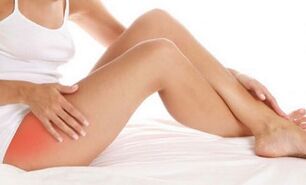
The symptoms are clear, but not so direct. Therefore, with one of these signs, it is necessary to consult a specialist for a diagnosis, as it can be both osteoarthritis and completely different diseases with similar symptoms.
Diagnosis
Diagnosis of the disease should be performed by more than one doctor, because pelvic pain can cause various diseases.
Like this:
- the therapist can find chronic diseases that cause discomfort in the hip;
- a neurologist rules out or confirms the presence of intervertebral hernias, they sometimes cause the same symptoms that are characteristic of osteoarthritis;
- urologist checks men for prostate inflammation, these diseases also often cause pain in the pelvis, radiating to the legs;
- the gynecologist is looking for adhesions in the patient, they are also similar in appearance to this disease;
- a rheumatologist is a close specialist who deals with such problems, he will help to determine the stage of the disease, its causes and methods of treatment;
- The surgeon and orthopedist will come to the aid in the advanced stage when the patient needs an operation.
So, to make an accurate diagnosis, it will not be possible to limit ourselves to a visit to the doctor, and in addition, you still have to pass tests:
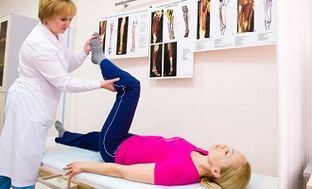
- clinical and biochemical analysis of urine and blood for inflammation in the body;
- MRI for soft tissue examination;
- CT for bone examination;
- x-rays will show bone damage; arthroscopy
- is shown in some cases;
- sometimes requires ultrasound of the pelvic organs.
The success of treatment depends on the correct diagnosis, the degree of damage and the cause of the deformity. For example, if osteoarthritis caused bone tuberculosis, then routine therapy is prohibited, and in the case of metabolic disorders, it is necessary to first eliminate the root cause, and then combat its consequences.
Treatment of hip arthrosis
The most effective treatment is in the early stages, then you can limit yourself to different medicines. How to treat inflammation - the doctor decides after a series of studies. Therapy mainly depends on the cause and degree of destruction, but mainly they try to relieve pain, remove inflammation, improve blood circulation, for this they use:
- non-steroidal anti-inflammatory drugs;
- pain relievers to return the patient to normal life and make walking easier;
- muscle relaxants to restore blood circulation to the diseased area of the body;
- chondroprotectors, which help stop the deformation of cartilage tissue;
- steroid injections are used when the pain intensifies;
- medicines for vasodilation.
In addition to pills, injections and oils, treatment includes the use of a special diet and exercise therapy, a series of measures helps to significantly improve the condition and restore movement in the legs.
Surgery
If conservative treatment does not bring a visible result or the disease was diagnosed in the last stage, then there is only one way out - this is an operation. The procedure is complicated, in rare cases, rejection or risk of thromboembolism and other fatal complications is possible. At the same time, for seriously ill patients, this is the only chance for a normal life, because with an artificial joint, a person after healing and rehabilitation will be able to move smoothly.
As with any surgery, a patient with coxarthrosis should be prepared in advance for general anesthesia, not allowed to eat or drink before the procedure, and the bowels cleaned. Then his legs are wrapped in elastic bandages to avoid edema, placed sideways and immersed in sleep. After that, the doctor makes an incision in the thigh, opens the entrance to the joint, cuts the head of the femur, inserts a peg into the incision, to which the titanium head is attached.
Damaged pelvic bone tissue is also removed and replaced with a polymer cushion to allow normal foot movement in the future. Next, the wound is sutured, a bandage is applied to the top. After healing, a period of healing still follows, but in the absence of rejection, a person can walk for 20 years, or even his whole life, walking calmly with an artificial joint, without feeling pain and stiffness.
Chondroprotectors
Due to the disease, the hip joint loses its mobility, changes in tissue are observed, cartilage destruction and the formation of bone growth in its place. Fortunately, effective medicines have been invented to restore cartilage tissue, they are also called chondroprotectors, which in Latin means "cartilage protection".
So what are these medicines capable of doing?
- stop the process of cartilage tissue destruction;
- accelerate metabolism in the joint;
- stimulate the production of synovial fluid, i. e. natural lubrication, which is normally produced in cartilage tissue and promotes easy bone slippage in the joint;
- relieves inflammation;
- facilitate joint movement.
Preparations may contain two main ingredients - glucosamine and chondroitin.
As for the form of the medicine, it can be different, from tablets, capsules, oils, creams to solutions for injections. The choice of drug, dosage and duration of use should be prescribed by the attending physician, taking into account the characteristics of the organism. But, as a rule, injections are used during exacerbations, and then the patient is transferred to a milder treatment, which can last for months, at least six months. Above all, cartilage tissue restoration is a long process, but it allows you to restore freedom of movement without surgery.
Injections
In some cases, treatment of the disease involves injections. Only a doctor should do them, using such a solution only in extreme cases, as it is dangerous to treat the disease in this way. The fact is that the gap between the bones in the hip joint is small, and with coxarthrosis it narrows even more. As a result, sometimes even an experienced doctor cannot insert himself into the joint capsule, and the risk of touching nerves and blood vessels is great.
At the same time, injections are sometimes the only way to relieve pain and inflammation; various drugs are used for these purposes:
- corticosteroids for pain relief, such injections are allowed to be done no more than once every two weeks and a course of not more than 7; Chondroprotectors
- help restore tissue, stimulate the production of synovial fluid for normal bone slippage, and improve tissue elasticity. In the form of an injection, medicines work faster than tablets or oils, allowing the medicine to be sent directly to its destination;
- hyaluronic acid is the latest method for relieving inflammation and pain. Used after all other drugs have been tried and have not obtained the desired result, the effect of its use is long-term, the injection is done once.
Physiotherapy
Unfortunately, in the fight against hip arthrosis, physiotherapeutic procedures are ineffective due to the deep bed of the affected area. However, sometimes doctors prescribe kinesiotherapy to relieve pain.Massage
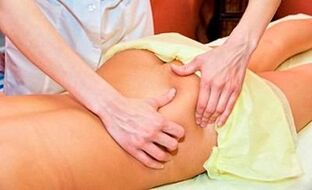
If a medical massage is performed by a professional, it helps to improve blood circulation to the joint, restore mobility and stop tissue destruction. But its use is indicated only exclusively during the period of remission, during the absence of pain.
Also, to have a clear effect, you do not need to visit a specialist once, but courses two or three times a year to maintain the condition of the bones and joints.
Treatment of coxarthrosis with folk remedies
Although it is quite difficult to completely cure coxarthrosis in the hip joint using only folk remedies, especially in a severe, advanced form, even doctors recognize the effectiveness of natural remedies. Many formulations based on herbs, roots and essential oils significantly alleviate the condition of a sick person, stop the destruction of cartilage and the formation of bone tissue and scar, stimulate the production of synovial fluid, which is very important in the fight against disease.
In order for the treatment to be more effective and give positive results, it is worth discussing with your doctor which alternative methods you can use yourself at home.
Some of the most popular tools:
- perestroot pomade. To prepare it, the root should be crushed in a coffee grinder, mixed with melted pork fat in a ratio of 2: 3, boiled on low heat for five minutes, cooled and lubricated with the composition of the sore spotin the evening for a month. Then rest for a week and continue treatment;
- celandine oil - dry 7 plants, separate the leaves from the stalk and cut, pour 1 cup of olive oil, leave in the cold for 14 days, after which the medicine will become like jelly, will melt in your hands. Lubricate the diseased area with a substance every evening;
- birch leaves, linden flower, dried parsley, chop, create instead of tea and drink daily;
- wash the lemon, chop it and pour in 1 liter. boiling water, drain after two hours, add honey, drink three times a day;
- combine honey, iodine, ethyl alcohol and glycerin in the same amount, insist 3-4 hours, lubricate the skin over the joints with a cotton swab 3 times a day;
- take 60 grams of kinkal and elecampane roots, mix with 0. 5 liters. vodka, insist for a day in a dark and cool place, drain, drink 25-30 drops three times a day 30 minutes before eating, can also be used for rubbing.
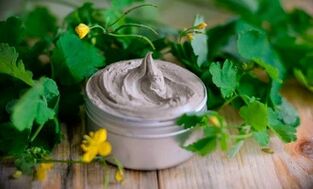
Exercises for coxarthrosis of the thigh joint
Specially selected exercises will help to significantly improve the condition with coxarthrosis, some will be suggested by the doctor. Before using them, you should consult your doctor, as with a wrongly selected complex and the presence of contraindications, you can further damage your health.
For example, deforming arthritis is dangerous to treat with physical activity - it is fraught with even greater pain and tissue destruction.
Gymnastics is also prohibited when:
- disease exacerbation;
- visible pain on movement;
- increased body temperature;
- exacerbation of chronic diseases;
- menstruation;
- hernie;
- severe heart and lung disease.
It is believed that therapeutic exercises for coxarthrosis should aim at restoring muscles and ligaments, but not loading an already weak joint, therefore, non-dynamic but static movements are more appropriate. I am also pleased that the set of exercises can be performed at any convenient time, without spending money and nerves on trips to specialists, and given their effectiveness, it would be simply a crime not to use such a remedyuniversal.
Here are some exercises:
- lying on your back, lift the affected leg by 10-15 cm, freezing for 20-30 seconds, repeat for the other leg;
- perform the same movement, but quickly, holding the legs for only 1-2 seconds;
- to raise not a straight leg, but a leg bent at the knee at a right angle;
- lying on your stomach, tear your legs off the floor and hold for a few seconds, spread slowly to the sides, tie again, down on the floor;
- lying on its side, bend the lower leg and raise the upper leg and hold it at an angle of about 45 degrees, wait 30 seconds, return to the starting position, repeat for the other leg;
- perform the previous exercise, but at the same time rotate the leg alternately inwards.
True, it is not recommended to practice only the description of exercises and videos, it is better to discuss this point with a doctor or even visit a rehabilitation specialist several times, as in case of another type of disease it is necessary to adjustcomplex in order to avoid complications.
Nutrition
Since osteoarthritis is mainly dependent on metabolism, it is important to adhere to proper nutrition when treating the disease. It should be frequent, but not abundant. Excluded:
- salty foods;
- fatty soup, mayonnaise, oils, dairy products (sour cream, cream);
- preservatives;
- baked goods made from premium flour;
- smoked.

They should be replaced with more cartilaginous ones:
- low fat milk and dairy products, especially cheese is very important to help tissue regeneration and calcium absorption;
- lean fish and meat;
- beans, mushrooms, buckwheat, lentils rich in plant proteins;
- jelly meat, jelly fish, jelly, which contain collagen;
- carbohydrates from cereals;
- vegetables, fruits;
- complex carbohydrates (dried fruits, honey).
Drinking plenty of fluids is important to maintain salt balance.
Proper nutrition helps remove uric acid, which is dangerous for the joints, relieves inflammation, removes excess weight, edema and thus reduces the load on the diseased area and even restores cartilage tissue. The greatest effect can be achieved in stage 1 of the disease.
Prevention
If there are cases of the disease in the family or if osteoarthritis of the hip joint is already present and has been successfully treated, it is important to have accurate and regular prevention, which consists of the following points:
- proper nutrition, which contains all the vitamins and minerals for normal tissue metabolism;
- weight control to avoid extra loads;
- Moderation of physical activity, the ability to move in such a way as to avoid injury and overload on diseased joints;
- beware of hypothermia, as it may worsen. It is important to dress warmly, wrap a tub in cold weather, to avoid landing on cold surfaces and staying in a draft;
- leads a healthy lifestyle, walks in the fresh air, gently strengthens leg muscles.
Osteoarthritis is a very unpleasant disease, which, without proper treatment, with bone fusion ends in disability and life in the wheelchair. Therefore, at the first symptoms, go to the doctor for diagnosis and help. Timely and comprehensive treatment allows you to get rid of the problem and live without pain and limitations.























